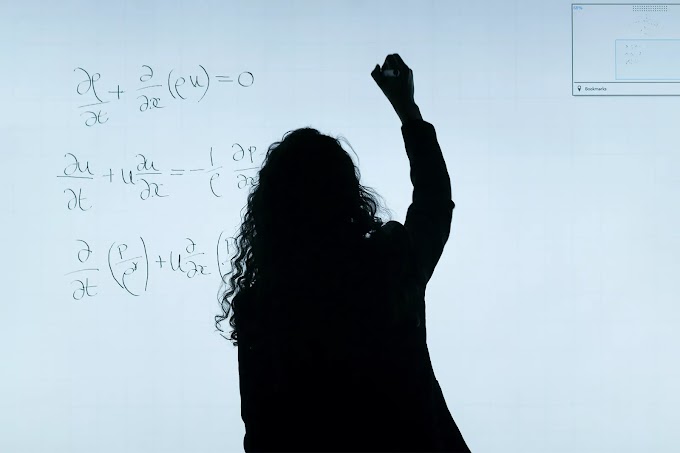-Subharthi Paul and Soujanya Barik
Introduction:
We are familiar with some exotic functions with formidable sines, cosines, logs etc. Riemann’s Zeta Function is not that ”dangerous” by its looks, but several of its results are highly counterintuitive and thought provoking. In fact, it has given rise to a million dollar math problem – ”Proving the Riemann Hypothesis”.
What is the Zeta Function?
Before we go ahead with what the million dollar ”Riemann’s Hypothesis”, let us look at how the Zeta Function looks like:
$\zeta (s) = \frac{1}{1^s}+\frac{1}{2^s}+\frac{1}{3^s}+\frac{1}{4^s}+.....$
Here, if we input $s>1$, we get some weird looking values.
For $ s=2$:
Well we can prove easily that the above series is convergent but the number $\dfrac{\pi^2}{6}$ seems to be a weird choice, isn’t it? Fortunately though, the result is provable! The trouble, however, starts when mathematicians try to take all real numbers (including negatives) and compute the results.
Well, if we take $s= -1$, the series will be;
Here, we would be tempted to say that the above series diverges. The sum of all positive integers up to infinity obviously cannot be a finite number...or maybe it can be!!
Riemann’s work on the Zeta Function
The Zeta Function was defined for $Re(s)>1$ before Riemann tried to compute the function by extending the domain of $s$ to both real and complex numbers. So, the Zeta Function could be computed for each and every point in the Argand Plane.
Let us consider $s= 2+i$ and visualize:
$\zeta (2+i) = \frac{1}{1^{2+i}}+\frac{1}{2^{2+i}}+\frac{1}{3^{2+i}}+\frac{1}{4^{2+i}}+.....$
So, each of the natural numbers have complex powers. To understand how to compute complex powers, lets try with a dummy no: $\frac{1}{3^{2+i}}$
Now, Let x be the value of $\frac{1}{3^{2+i}}$.
Thus, we can say that for $s \in C$, the Zeta function gives complex values! But, before hastily coming to conclusions, let us once again look at $s \in C : Re(s) \leq 1$. As we saw previously that for $Re(s)\leq 1$, the series seems to diverge. So, the sum would diverge and the Zeta function would not exist for $Re(s)\leq 1$.
Counter Intuitive values for $S$ : $Re(s)\leq 1$
Riemann used ”Analytic Continuation” to show that the Zeta function can be extended to the complex plane except at $s=1$. In fact, he calculated it using the same method yielding several counter-intuitive and interesting results like:
$\zeta (-1) = 1+2+3+4+...... = \frac{-1}{12}$
$\zeta (-2) = 1+4+9+16+......= 0$
From his derivations, he could show that $\forall s \in$ Negative Even Numbers, the Zeta function, gives the value 0. He called these trivial zeros.
The Riemann Hypothesis
Now that we have an idea about the Zeta function, let us delve into Riemann Hypothesis.
Riemann found out that apart from the trivial zeroes, there were other zeroes of the Zeta function. He realised that the zeroes lay in the region where $s\in \mathbb{C}:Re(s)\in[0,1]$. He called this region the "critical strip".
Riemann further hypothesised that all the non-trivial zeroes of the Zeta Function lies in the line $s\in \mathbb{C}:Re(s)=\frac{1}{2}$.
This particular result was not proved by Riemann. Calculations were done for several values in the $Re(s)=\frac{1}{2}$ line using supercomputers and for each of the values, the answer was 0.
Implications of Proving or Disproving a Hypothesis
Zeta Function has found its usage in various important mathematical results. These results were derived by taking the Riemann Hypothesis as a postulate. One of them for example is the Prime Number Theorem. Riemann Zeta Function, in fact, is quite related to prime numbers. It can be shown that:
The Prime Number Theorem describes the distribution of primes and it takes the Riemann Hypothesis as a postulate. Thus, if any zero is found in the critical strip for a value $s: Re(s)\neq \frac{1}{2}$, the Riemann Hypothesis can be proven wrong which will also disprove several other important math theorem.
References
- Image: https://en.m.wikipedia.org/wiki/File:Zeta_polar.svg
- Stein and Shakarchi complex Analysis.



